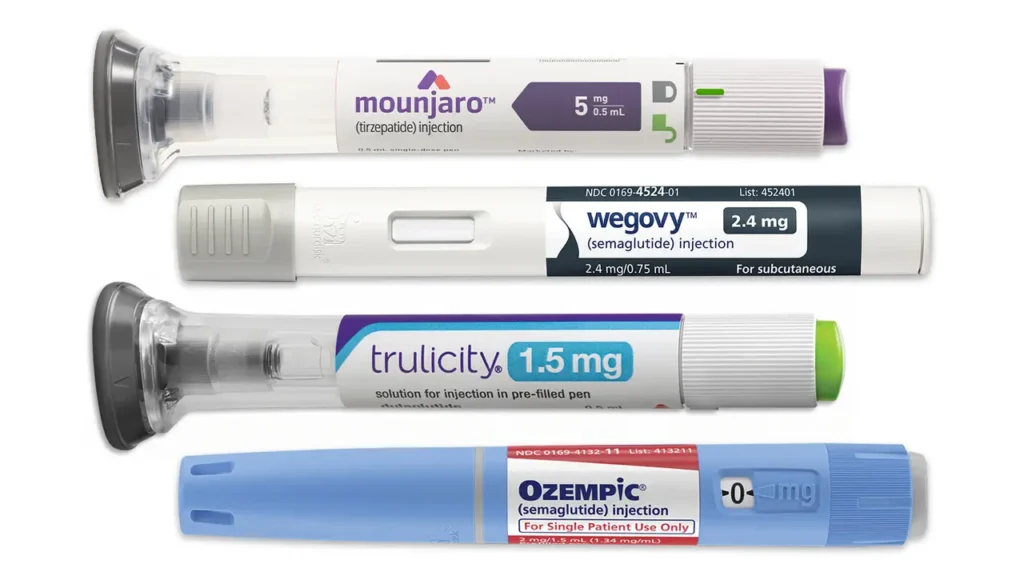Key Takeaways
- Virtual reality planning harnesses 3D visualization and data integration to form precise, patient-specific surgical plans, enhancing preparation and communication with surgical teams and patients.
- VR simulations and procedural rehearsals allow surgeons to practice risk-free, perfect techniques and gain confidence, which translates to increased precision and better outcomes.
- Patients enjoy visualized results and immersive education to establish expectations and facilitate informed consent.
- Challenges to VR adoption in surgical planning include the requirement for advanced hardware and intuitive software, integration with existing medical systems, and extensive clinical validation.
- Haptic feedback and ethical considerations are important for realism and trust in VR surgical education and patient care.
- The future of VR in surgery looks promising with enhancements such as AI integration, real-time augmented overlays, and clear regulatory guidance, fostering innovation and safety in the clinic.
Virtual reality surgical planning for liposuction refers to the application of digital 3D modeling and VR tools to enable surgeons to map out steps prior to the procedure. Surgeons can view all the intricate layers of fat, skin and muscle with these systems and make precise planning for each patient. Quite a few clinics today deploy VR systems to reduce hazards, increase safety, and assist surgeons illustrate to patients what to anticipate. The ascent of VR surgical planning aligns with the drive for improved patient outcomes and reduced guesswork during operations. As additional clinics and hospitals adopt VR technologies, patients and surgeons have an increasing number of options for care. The following parts explain how VR functions in liposuction planning and what it implies for both parties.
What is VR Planning?
VR planning is where virtual reality helps surgeons plan for surgery. It utilizes patient scans into 3D models so surgeons can visualize and manipulate the patient’s anatomy in a virtual environment. It allows surgeons to see what they’ll encounter in the OR, therefore providing more accurate planning.
1. Data Integration
The fusion of CT, MRI and ultrasound images provides a comprehensive and precise map of the patient’s anatomy. By integrating these sources in VR, surgeons have a unified model that highlights all the critical information without switching between different documents or screens. This way, the surgical plan matches the patient’s actual, individual anatomy. VR systems simplify managing large, intricate data. Doctors can gaze at and traverse all this data in a much more intuitive way than scrolling through 2D images. When all patient information lives in one place, it reduces errors and saves time, allowing teams to concentrate on what’s important—making the best decisions for each patient.
2. 3D Visualization
3D visualization allows surgeons to observe depth, contours, and space that flat images can’t provide. Volumetric rendering makes models that look and feel real, so doctors can spot hidden blood vessels or fat layers before they cut. These images assist physicians in communicating among themselves and with patients demonstrating what will occur during surgery or what potential complications might arise. When everyone can see the same thing, it’s easier to come to consensus on the best plan and anticipate tricky steps.
3. Surgical Simulation
VR surgical simulation provides surgeons a risk-free environment for practice. Within these virtual realities, can experiment with liposuction moves, sampling options, and discover what fits each patient’s form best. This type of practical rehearsal develops expertise, hones snap decision-making, and relaxes butterflies prior to the actual operation. VR can even adjust the simulation to fit each patient, so each run through is personalized.
4. Outcome Prediction
VR can predict such results by running virtual simulations of the operation. These forecasts assist physicians identify issues, establish reasonable expectations, and tweak their strategies prior to beginning. Data from similar cases and the patient’s own physiology inform these predictions, providing physicians greater assurance and assisting patients in managing their expectations. Each insight keeps teams iterating on results.
5. Procedural Rehearsal
Procedural rehearsal indicates surgeons utilize VR to practice the complete surgery from start to finish. It works for complex or rare cases, allowing physicians to fine-tune their timing and procedures. This can accelerate actual surgeries and minimize mistakes, particularly when the anatomy is atypical or the plan is innovative.
The Surgeon’s Advantage
VR provides surgeons a true advantage in planning and executing liposuction. Through VR coupled with 3D printing, physicians are able to visualize and rehearse on lifelike, physiological models. These tools save time and reduce the hours surgeons spend behind a computer, allowing them to devote more face-time to patients and less to documentation.
Enhanced Precision
VR tools provide detailed, three-dimensional maps of a patient’s anatomy. Surgeons can plan each and every move before ever lifting a tool. That translates into less error and more individually customized outcomes.
With greater accuracy, less complications occur during and post-surgery. Patients frequently recover more quickly and return to normal life earlier. VR allows surgeons to repeat each stage until their skills are honed.
Spatial comprehension is crucial. Visualizing precisely where fat lies or nerves run assists surgeons in aligning their actions with their goals for an optimal result.
Risk Mitigation
VR planning catches risks early. By walking through the surgery virtually, doctors can prevent encountering surprises. This is especially important for nerve- or blood vessel-rich regions.
When surgeons visualize paths in advance, this helps them avoid vital structures. If a sneaky situation arises, VR allows them to practice different solutions before they’re in the OR.
Less mistakes, more pre-surgical checks. It saves time, builds confidence and leads to safer operations.
Advanced Training
- Simulate rare or complex cases for hands-on practice
- Let surgeons repeat scenarios until they feel confident
- Offer instant feedback for faster learning
- Make learning available anytime, anywhere
VR keeps skills fresh Pros and trainees both get to learn new techniques without waiting for actual cases. Resident surgeons get to experience faster, helping them bridge skill gaps. VR practice sticks better, so techniques are retained longer.
Teamwork and Collaboration
VR simulations allow the entire surgical team to rehearse as well. They witness how to operate as a team, strategize roles, and troubleshoot collectively.
This communal ritual gets us all psyched and on the same page come surgery day.
It boosts trust among team members.
Even small tasks run smoother.
The Patient’s Perspective
VR surgical planning for liposuction puts patients back in the driver’s seat of their care. With 3D imaging and VR, patients visualize what’s ahead, make decisions from transparent information, and collaborate with their surgeon to achieve their ideal result. This deeper involvement is transforming attitudes toward surgery and recovery.
Visualized Outcomes
By looking at virtual models, patients can imagine what their bodies might look like post-surgery. This allows us to have honest goal-setting and frank discussions with their surgeon.
- Creates confidence – patients witness incremental shifts in the pre-surgical phase.
- Makes it easier to ask questions and voice worries
- Lets patients compare different outcomes side-by-side
- Reduces your anxiety by demonstrating in easy images what is going to happen.
With the VR, patients visualize their anatomy and the proposed modifications. Rather than speculate, they get a direct view of what can and can’t be done. That sort of clarity can be huge in the decision-making process.
Informed Consent
VR can illustrate surgical risks and steps in a manner that words or paper cannot. Immersive visuals provide patients a transparent perspective into what the ride will be like and life on the other side.
This empowers patients to make informed decisions and feel a sense of agency. They can tell the distinction between treatments, such as liposuction versus non-invasive fat removal. With this, conversations with the care team seem more candid, less hurried.
Feeling empowered is the secret. VR allows patients to ask more intelligent questions, because they can reference what they see and receive immediate responses.
Personalized Procedures
VR and 3D imaging allow surgeons prepare for each patient’s individual shape. Rather than a “one size fits all” method, surgeons can chart a plan that fits just so.
This level of detail results in surgeons being more accurate. Patients tend to recover more quickly–often back to baseline in days, not weeks. Less issues = more patients satisfied with their outcome, years later.
VR assists in adjusting the schedule for each individual, considering body type, objectives and medical requirements. All of which translates into better outcomes and more confidence on both sides.
Technological Hurdles
Virtual reality in surgical planning for liposuction encounters numerous challenges. These consist primarily of the hardware, software, system integration, and validation needs. Every one of these components has its own issues that can stymie or cap the advancement of VR in surgery.
Hardware
The expense of high-end VR headsets and equipment is a hindrance to numerous clinics and hospitals, particularly in budget-constrained regions. These devices are frequently in need of an upgrade, which piles on additional costs.
Most of today’s VR headsets are bulky or uncomfortable to wear for hours on end, so they’re not really suited to extended planning sessions. Comfort and fit go a long way for surgeons who have to concentrate on tiny minutiae for hours on end.
Graphics are another concern. Low resolution, lag and restricted field of view can rupture immersion and cause you to miss small but critical anatomical details. You need good graphics cards yet they’re neither inexpensive nor always easy to obtain.
When groups intend to schedule surgeries collaboratively, securing sufficient VR headsets for all participants isn’t always feasible because of both expense and availability factors.
Software
VR software has to be intuitive or surgery teams won’t be able to embrace it. Complicated menus or difficult-to-learn controls diminish its utility and planning velocity.
One big technological challenge is ensuring the VR software is compatible with various types of medical scans, such as MRI or CT, from different manufacturers. This is required for patient-level planning.
The other difficulty is generating accurate 3D models from the imaging data. Shoddily constructed models can contribute to surgical errors.
As surgical procedures and imaging technologies evolve, VR software needs to be frequently updated in order to stay useful and safe.
Integration
- Checklist for smooth VR adoption: assess hardware compatibility, review software integration with hospital systems, check for data privacy compliance, confirm user training, and test interoperability with existing imaging platforms.
- Working closely with IT and surgical teams is essential for smooth installation and service.
- A good-fat integration can assist teams to organize faster, discuss ideas clearly and steer clear of errors.
- Education and assistance are necessary so that everyone can approach VR equipment with assurance.
Validation
Validation of VR tools is critical to prove they help, not harm, surgical planning. Clinical trials have to verify whether VR actually provides better outcomes for patients.
Validation is the difference to surgeons and patients trust. It makes the system secure.
User feedback helps identify bugs and areas for improvement, enhancing VR tools over time.
Beyond The Simulation
VR is transforming surgical planning for liposuction. In clinical applications, VR extends beyond procedural simulation. It allows surgeons and trainees to rotate, zoom, and peel back layers of virtual models, immersing rehearsals in tactility and reducing the likelihood of encountering unknown anatomy for the first time during a live surgery. The notion that reality itself could be a simulation has driven industry pros to construct more immersive, lifelike platforms. That contributes to making VR a usable tool for better patient outcomes, fewer errors, and safer surgeries worldwide.

Haptic Feedback
Haptic VR feedback = introducing touch to the VR experience, so you feel what you see. This tech provides surgeons with haptic feedback, such as resistance or texture, when wielding virtual instruments.
With these feelings, the practice seems more like life. Trainees can practice the suction pressure required in liposuction or how soft tissue should feel. This grounds the practice less in the abstract and more in the operating room. Research demonstrates that real life hands on experiences cultivate fine motor skills, so important in the work of a plastic surgeon. Working with haptic feedback helps new surgeons build muscle memory, steadying their hands when it counts. Ultimately, this can result in more preparation and easier shifts to working on patients.
Ethical Boundaries
VR medical training presents ethical dilemmas. Guarding patient privacy and keeping confidential data secure in VR worlds is essential. VR sessions could include patient photos or medical files, so tight protections are required.
We need clear ethical guidelines for deploying VR in clinics. Medical experts need to ensure these instruments remain utilized safely and conscientiously. Training teams must adhere to protocols that respect patient privacy and data security. It’s on all of us, users, and creators to stay training ethical.
Psychological Impact
Immersive VR can be a powerful arbiter of surgical trainee cognition and emotion. A quality VR meditation session decreases stress and helps you focus. Other trainees report that the opportunity to practice in a virtual environment makes them less nervous about the actual.
VR can additionally accelerate motivation and engagement. The hands on, gamified environment makes lecture more active. It’s vital to guard against overconfidence or fatigue. Coaches should monitor the psychological impacts, so VR solutions assist and don’t sabotage.
Future Trajectory
VR is quickly transforming how surgeons prepare and study for liposuction and other operations. As the technology improves and drops in price, a growing number of hospitals and training centers are adopting it. It implies that more physicians will be able to utilize patient-specific 3D models, resulting in safer surgeries and reduced post-operative complications.
Augmented Overlays
Augmented overlays provide a digital layer of information on top of what a surgeon views in real-time. They can overlay blood vessels, fat layers or nerves during a liposuction — assisting the doctor in avoiding errors.
It’s easier for surgeons to visualize concealed anatomy without having to open up more of the patient’s body. This type of assistance can help make the surgery safer and faster. For instance, a doctor could view a patients vein locations during surgery, which reduces the chance of stabbing them by accident. VR is critical for constructing and trialing these overlays prior to real-world deployments, ensuring they function properly and are non-obstructive.
AI Integration
Combining AI with VR is taking surgical planning to the next level. AI can analyze scans and medical records and other data to help select the optimal surgical plan for each patient.
AI-powered feedback may alert physicians to potential complications or outcomes. For instance, AI tools are able to identify a greater risk of bruising in particular body types or highlight regions where fat extraction could be more difficult. That is, the surgery can be scheduled in a more informed way, and potential complications can be detected early. Surgeons and AI specialists must collaborate to develop tools that physicians can confidently deploy in real-world cases.
Regulatory Pathways
| Regulatory Body | Key Roles | Criteria |
|---|---|---|
| Medical Device Boards | Approve VR tools for use | Safety, accuracy |
| Health Ministries | Set guidelines for training | Efficacy, usability |
| Data Authorities | Oversee patient data in VR | Privacy, compliance |
Patient safety and demonstrated outcomes foundational. Regulators verify that VR devices don’t increase risk. Continuous study refines laws with innovation.
Conclusion
Virtual reality makes liposuction planning innovative. Surgeons now visualize a roadmap before they begin. Patients become familiar with the procedure and potential complications. This technology reduces guesswork and introduces more confidence. Certain tools remain expensive, and support is not universal. Yet, the shift from old-school planning to tactile 3D views transforms the entire game. Briefer previews, smarter mapping, and less surprises equals safer care. Liposuction is no longer just about the deft hand. It’s about savvy planning, actual pictures, and direct discussions. Stay current and inquire with your clinic about what technology they utilize. Great tools help both sides visualize optimal path forward.
Frequently Asked Questions
What is virtual reality surgical planning for liposuction?
Virtual reality surgical planning for liposuction. It enables more precise planning and can enhance surgical results.
How does VR planning benefit surgeons in liposuction?
VR planning provides surgeons with a specific look into the patient’s anatomy. This assists them in planning their incisions, anticipating complexities and being more precise during liposuction.
What are the advantages for patients using VR in surgical planning?
Patients get to see a visual preview of what their results might be. This aids in setting reasonable expectations, reduces miscommunication, and can calm nerves pre-liposuction.
Are there any risks or limitations with VR surgical planning?
Its biggest deficiencies are relative expense, equipment and training overhead. VR is not a substitute for surgical expertise and experience.
How reliable is VR simulation for predicting liposuction outcomes?
VR simulations provide better visualization than traditional methods. Actual results may vary due to individual healing, among other things.
Can VR planning be used for other surgical procedures besides liposuction?
Yes, VR planning is used for many other types of surgery such as orthopedics and neurosurgery and cardiac surgery as well. It contributes to enhanced precision and patient safety across disciplines.
What is the future of VR in surgical planning?
Professionals predict VR will be more widely available and sophisticated with technological advancements. It could become a standard in surgical planning across the globe, providing improved results for patients and surgeons alike.








